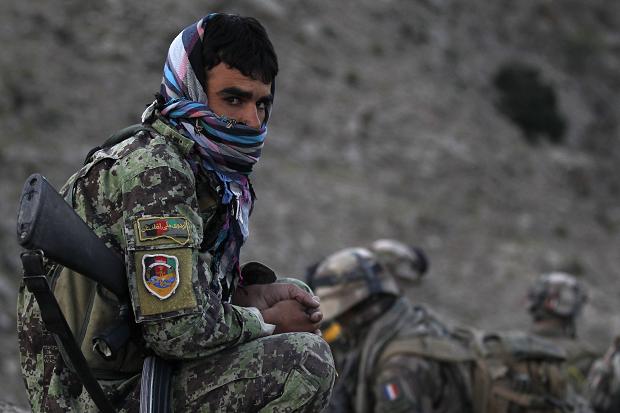
From Michael Hirsh, Atlantic: Senior commanders with the American-led International Security Assistance Force, which consists of 28 NATO countries and 22 other participating nations, say that substantial aid and military support is going to be necessary well after the scheduled withdrawal at the end of 2014. "For some time to come, it’s our expectation that we will need to supply the Afghans [with] air support, certainly, counter-IED support, logistic support, and a number of areas where their capabilities are not at the level where they need to be at," Lt. Gen. Nick Carter, the deputy ISAF commander, said in an interview in Kabul over the weekend. "It’s our expectation that we’ll need to continue to build those areas for some time to come and probably beyond 2014."
Asked how many years that role might go, Carter, a British officer, said he believes that ISAF will need to "set the horizon out to 2018 … It will take between three and five years to achieve. And it’s important for people to understand that."
Within weeks, probably by the end of June, ISAF is expected to move to the final, and fifth, phase of its "handover" to the Afghan army and police. At that point the combined Afghan National Security Forces, as they are known, are expected to take the nominal lead in planning and directing all missions nationwide against the insurgents; currently ANSF is said to be doing that for about 85 percent of the country. The U.S. and other ISAF countries are then to assume a purely "train, advise, and assist" role. But Carter and others say ANSF is still falling short in effective leadership; command and control; logistics and medical evacuation; training its personnel effectively; and integrating the army’s warfare strategy with the Afghan police and central and provincial government agencies. These deficiencies will continue long after 2014.
In the end, securing Afghanistan’s future is likely to be more far expensive than Washington and other NATO capitals have fully reckoned with yet. It won’t be an easy political choice, either, coming at a time when the U.S. defense budget has been slashed by the sequester and European NATO nations must conform to economic austerity policies. . . .
Carter, in a blunt assessment, indicated that ISAF is under no illusions about the war ending in the foreseeable future and that, even after years more of effort, the optimal results will not be pretty. Asked whether the ultimate outcome ISAF is aiming for would be a version of the somewhat cynical term attributed to a former ISAF commander, Gen. David Petraeus –"Afghan Good Enough," meaning a democratic government that remains corrupt and weak, and an unsatisfactory Afghan security force that barely holds the country’s center — Carter said he prefers to use another term to describe Afghanistan’s likely future: "a stable instability." Outside of major cities such as Kabul, Kandahar, and Herat, he says, substantial portions of the country will not be very "connected" to the central government. But at the same time the Taliban will not be able to take over the country again, said Carter, who serves as deputy to Marine Corps Gen. Joseph Dunford, the ISAF commander. . . .
While Obama is committed to withdrawing the remaining 63,000 or so U.S. troops by the end of 2014, his administration is still negotiating a post-2014 strategic partnership with [Hamid] Karzai that calls for a residual U.S. force numbering from 5,000 to 10,000 troops, according to various reports. Karzai, meanwhile, recently revealed that he has been discussing the use of as many as nine military bases to be used by the United States and ISAF after 2014. Carter confirmed that ISAF is considering the need for that many bases to support and supply six Afghan corps, as well as provide a headquarters, air-support mission, and training facility. . . .
So far, however, of the NATO countries only Germany has officially offered to provide up to 800 troops to supply training after the 2014 deadline. (photo: Joel Saget/AFP/Getty)
Image: afp%205%2016%2013%20Afghanistan.jpg

